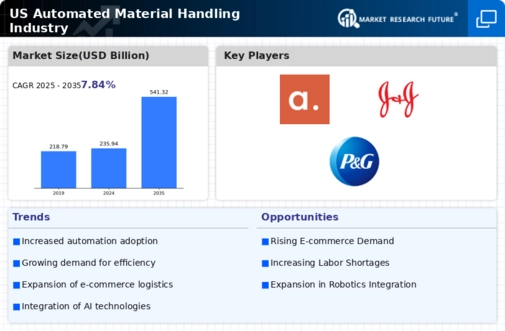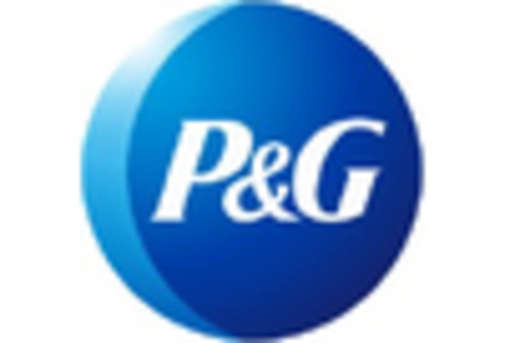US Automated Material Handling Market Summary
The US Automated Material Handling Industry is projected to experience substantial growth, reaching 541.32 USD Billion by 2035.
Key Market Trends & Highlights
US Automated Material Handling Industry Key Trends and Highlights
- The market is valued at 235.94 USD Billion in 2024, indicating a robust starting point for growth.
- From 2025 to 2035, the industry is expected to grow at a compound annual growth rate of 7.84%.
- By 2035, the market is anticipated to expand to 541.32 USD Billion, reflecting increasing demand for automation.
- Growing adoption of automation technologies due to the need for operational efficiency is a major market driver.
Market Size & Forecast
| 2024 Market Size | 235.94 (USD Billion) |
| 2035 Market Size | 541.32 (USD Billion) |
| CAGR (2025 - 2035) | 7.84% |
Major Players
Apple Inc (US), Microsoft Corp (US), Amazon.com Inc (US), Alphabet Inc (US), Berkshire Hathaway Inc (US), Meta Platforms Inc (US), Tesla Inc (US), Johnson & Johnson (US), Visa Inc (US), Procter & Gamble Co (US)













Leave a Comment